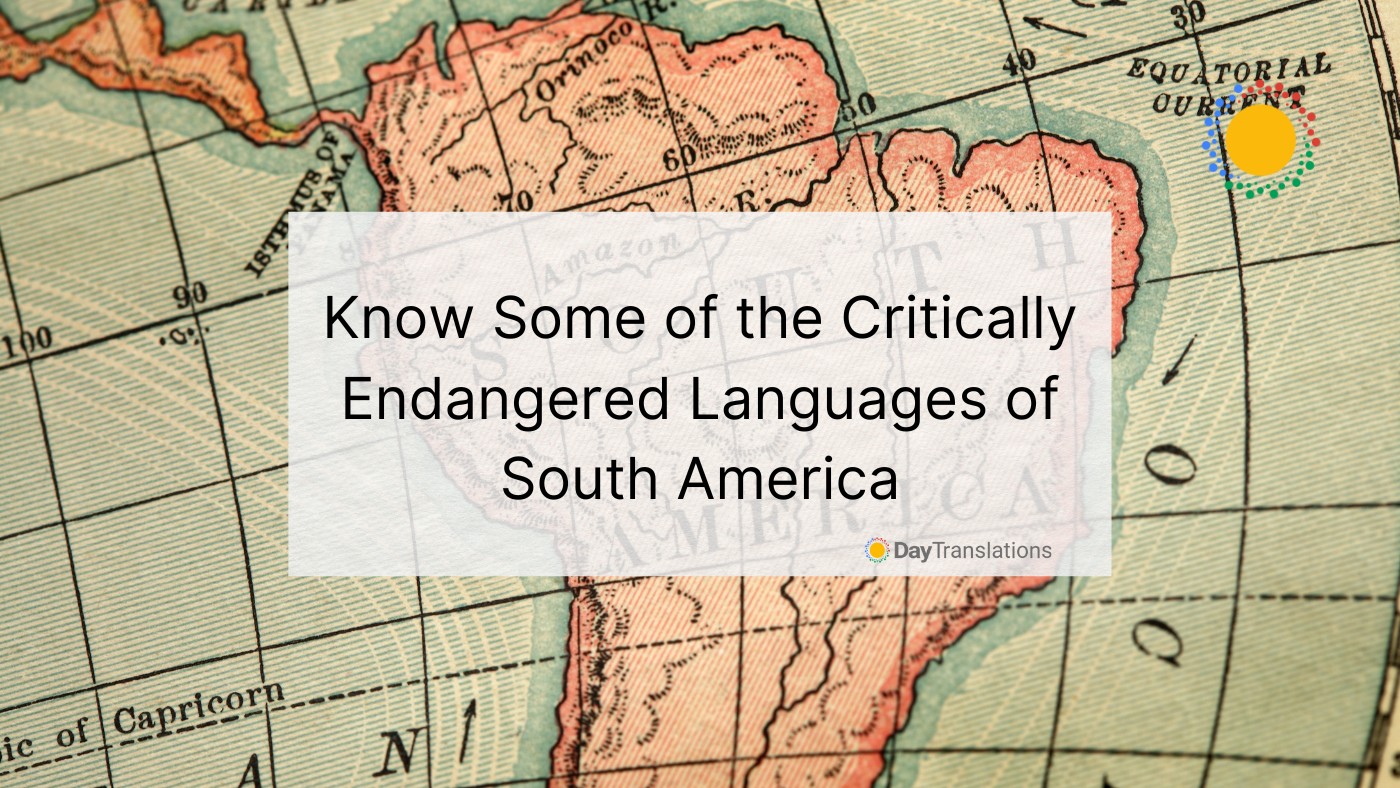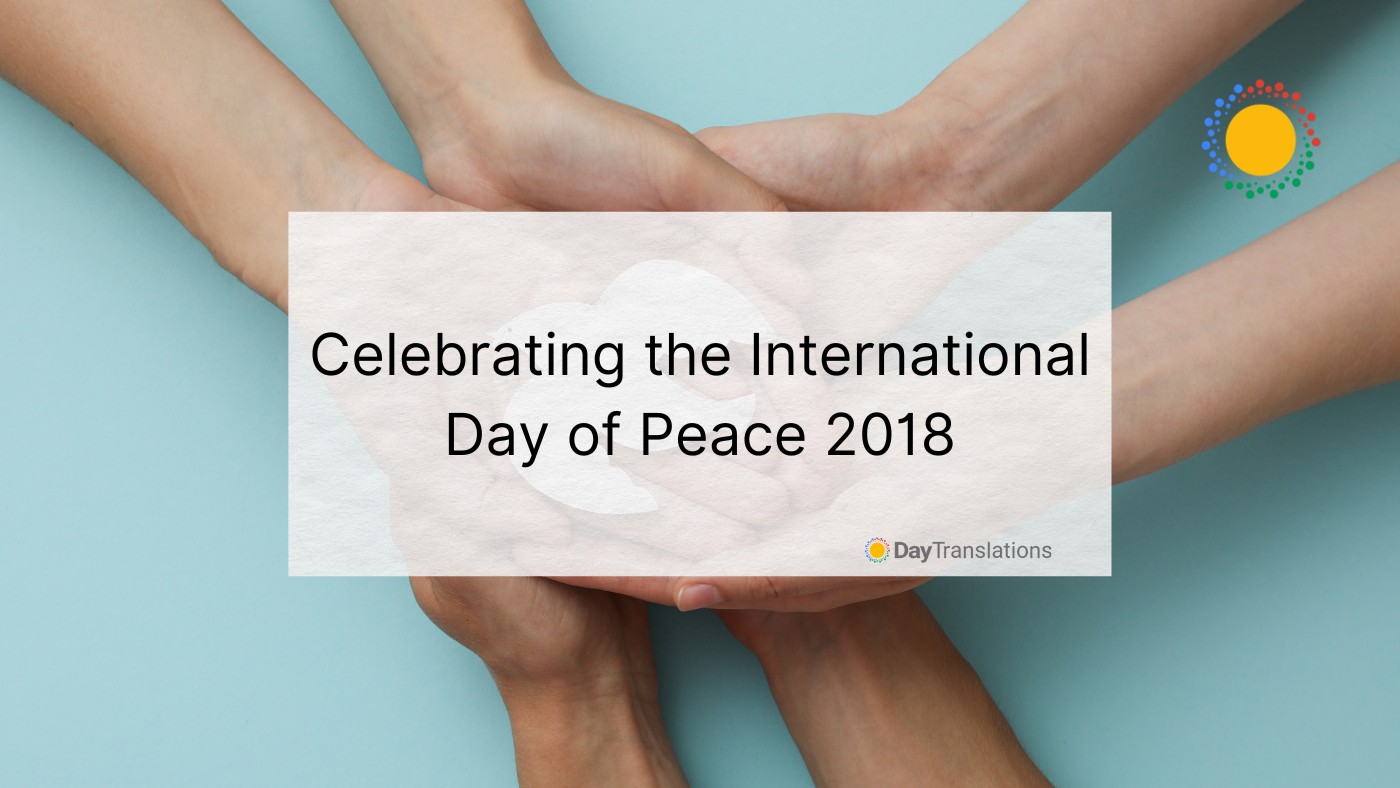If you have a passion for languages, you’ll realize that South America speaks more languages than just Portuguese and Spanish, but it will sadden you to know that the number of critically endangered languages of South America is on the rise.
South America is a continent comprising 12 countries as well as three dependent territories, including South Georgia and the South Sandwich Islands, Falkland Islands and French Guiana.
The continent of South America is one of the world’s most linguistically diverse regions, with 37 language families comprising more than 448 languages spoken across the continent. However, UNESCO says that the number of endangered languages of South America has now reached 108. These are classified as critically endangered and without any means to preserve them they will soon be extinct.
Because most of these endangered languages of South America are indigenous, they are often in oral form with no documentation. Speakers of some of these indigenous languages live in remote places that are quite difficult to access. With some only having one or two living native speakers in their advance years, it is inevitable that the languages will fall silent very soon.
Reasons for the linguistic diversity
There are various reasons why South America is linguistically diverse. One is the continent’s geography. The continent has many dense jungles, wide rivers and tall mountains, rendering most areas inaccessible. Likewise, except for the Inca Empire that helped spread the Quechua language in the areas they ruled, there are just a handful of pre-Columbian empires that were able to introduce their languages over large occupied areas. These are the two main reasons why the distinctive languages of many communities across South America were maintained and preserved.
Linguists have a difficult time in reconstructing the origin and evolution of these indigenous languages due to the absence of written documents and historical records. The scarcity of their knowledge on most of the indigenous languages makes it hard for them to ascertain if one is a language or a dialect, a part of a language family or a stock.
While missionaries, ethnographers and linguists continue to do research, studies and documentation especially in recent years, only a few of these endangered languages of South America have received adequate analysis and description. Even today, several tribes and communities remain inaccessible due to their location and while the researchers are able to reach other communities, it is still difficult for them to identify each language and to which language family they belong. With the absence of a standard system of identification, the situation becomes more complex, as one researcher may call a spoken variety a language while another may classify it as a dialect.
Main languages in South America
With the variety of languages existing in the continent, some are classified as main languages, some of which are official or co-official with a top indigenous language. Overall, Portuguese is the main language spoken by the majority of South American countries, followed by Spanish. Some of the other major and official languages are Dutch, French and English.
Among the native or indigenous languages, those with the most number of speakers are Quechua, Nahuatl, Guaraní, Aymara, Mapudungún and Maya languages. Only Guaraní (Paraguay) and Quechua (Bolivia) enjoy official status together with Spanish. The rest of the native languages do not have recognized status in their countries. Majority of the ethnic communities in South America are bilingual while others are multilingual.
Colombia however, based on the Revised Constitution of 1991, adopted Law 1381 in 2010, which provides for the recognition, protection, preservation, use, promotion and strengthening of Colombia’s ethnic languages and the linguistic rights of the speakers of ethnic languages.
However, due to the political, economic and social pressures, many of the people in South America have to switch to Portuguese or Spanish. Due to this, it is foreseen that many of the indigenous languages, even those that still have millions of native speakers may disappear by the 21st century unless language preservation programs are initiated by the government.
Critically endangered languages of South America
There are about 108 endangered languages of South America according to UNESCO and several others are at the critically endangered level. Learn some of them right here.
1. Tehuelche
The Tehuelche language belongs to the Chonan language family of Patagonia in Argentina. It is a native language of the Tehuelche people, a group of nomadic hunters that used to occupy an area in what is now known as Chile. Other names for this language include Aonek’o ‘ajen and Aonikenk.
When the Spanish came to Argentina, they encountered giant footprints and believed they landed in the land of giant Patagones. In reality, the footprints were made by the Tehuelche people who wore moccasins. The language began its decline around the latter part of the 1500s when the local tribes began to associate with the Mapuche tribes that spoke Mapudungún, which eventually became the main language they spoke. With the Spanish conquest of the area, speakers of Tehuelche later switched to Spanish. As of 2000, only four native speakers of Tehuelche remain.
2. Pacahuara (Bolivia)
Pacahuara is an indigenous oral language of the Pacahuara people in Bolivia. They lived in the Amazon but displaced by the encroachment of the rubber industry. There are two groups of Pacahuara speakers. The contacted group has five speakers but one died in late 2016, therefore only 4 remain. The uncontacted group, with more members, lives near the border with Brazil, between Río Pacajuaras and Rio Negro. This group, consisting of about five families, is in voluntary isolation and refuses to have contact with other people, including researchers. The number of speakers, as of the latest available data (2017) is between 4 and 96.
3. Arikapú
Arikapú, which is also called Maxubí, is a Yabutian language. In 1998, there were six people living in Rondônia, Brazil who speak the language. The Arikapú people dwell in the rainforests of Brazil. They did not have contact with Western civilization and lived a simple existence, living off the land and waters in the rainforests. However, when the rubber industry became widespread, their numbers decreased due to Western diseases. As of 2009, only two native speakers remain. The sad part is one of the speakers live in Terra Indígena Rio Branco where many of the people speak Portuguese and Tuparí. The other Arikapú speaker lives in Terra Indígena Guaporé, where the main language spoken is Makuráp. The Arikapú-speaking individual in T.I. Guaporé also speaks Portuguese, Makuráp and Djeoromitxí. These two individuals did not pass the native language to the younger generations.
4. Guarasu
Guarasu is a native language that is spoken in Bolivia and Brazil. It is also called Guarasugwé or Pauserna. Like most of the smaller indigenous tribes, they are wary of people outside their community. There was an attempt by linguistic researchers to gather information about Guarasu but the tribal chief did not allow them because she believed that the researchers were there to gather information for their political enemies. However, the latest data the researchers have is that there are still four people remaining who speak Guarasu as their native tongue.
5. Guató
Guató is another indigenous language in Brazil. It is believed to be a language isolate. The Guató people used to occupy the southwest area of Brazil called Mato Grosso. They live near the banks of lakes and use to travel by canoes. Like the other indigenous peoples of South America, they were decimated by the diseases brought by Western people, especially those who worked in the rubber industry. The oral language only has four native speakers remaining as of 2011.
6. Kanoê
Kanoê or Kapishana is another language isolate spoken in the Rondônia region of Brazil. There is more documentation regarding the language, as there is a current project to record written and auditory data about it. There are still about 319 people belonging to the tribe. One group is already integrated into mainstream society while the other one isolated themselves. Many of them speak Portuguese today. The group that is integrated into Brazilian society only has three remaining Kanoê speakers, while the isolated group consisting of just one family still has two native speakers.
7. Oro Win
Oro Win is one of the critically endangered languages of South America that is spoken in Brazil. As of 2010, only six speakers who are in their 50s are known to exist. Oro Win is a Chapacuran language used by the Oro Win indigenous people who live in the upper parts of Pacaás Novos River. Like the Kanoê-speaking people, they live in Rondônia. The language started to disappear when the rubber tappers claimed their lands around the 1980s. When they returned after a decade, the language was almost extinct. However, there is renewed hope for Oro Win as the language is now taught in schools.
8. Yaghan
The Yaghan or Yagán language of Chile is in a very critical level as only one speaker remains. It is also a language isolate. The Yagán people live in Tierra del Fuego. The last native speaker of the language is already in her 90s (as of June 2018). Her name is Cristina Calderón. She is a resident of Villa Ukika, which is at Chile’s Navarino Island. Calderón is the sister-in-law of Emelinda Acuña, the other native Yagán speaker who died in 2005.
Yagán has a chance to survive, as it is now being taught in many kindergarten schools in Chile. This is a result of Cristina Calderón’s cooperation with linguists for several years to save the language.
Hundreds of languages are in danger of being lost, like the endangered languages of South America. With the help of linguists, researchers, government and other concerned organizations, many will have the chance to survive.
Accurate translation of documents
Day Translations, Inc. supports the promotion and preservation of languages around the world. If you need help in accurately translating your documents into a South American language, you’ve come to the right place. Our translators are native speakers and they live in-country, enabling them to grasp even the subtlest of nuances of a language. They can tailor the translation to suit your target readers and they have subject matter expertise as well, should you need legal, medical and other types of translation services. Day Translations is open 24 hours a day, every day of the year, to give you the best translation and interpreting services whenever and wherever you need them. For a quick quote, contact us at 1-800-969-6853 or send us an email at Contact us. Our human customer representatives, who speak your language, are standing by to answer your call.














Sorry, the comment form is closed at this time.